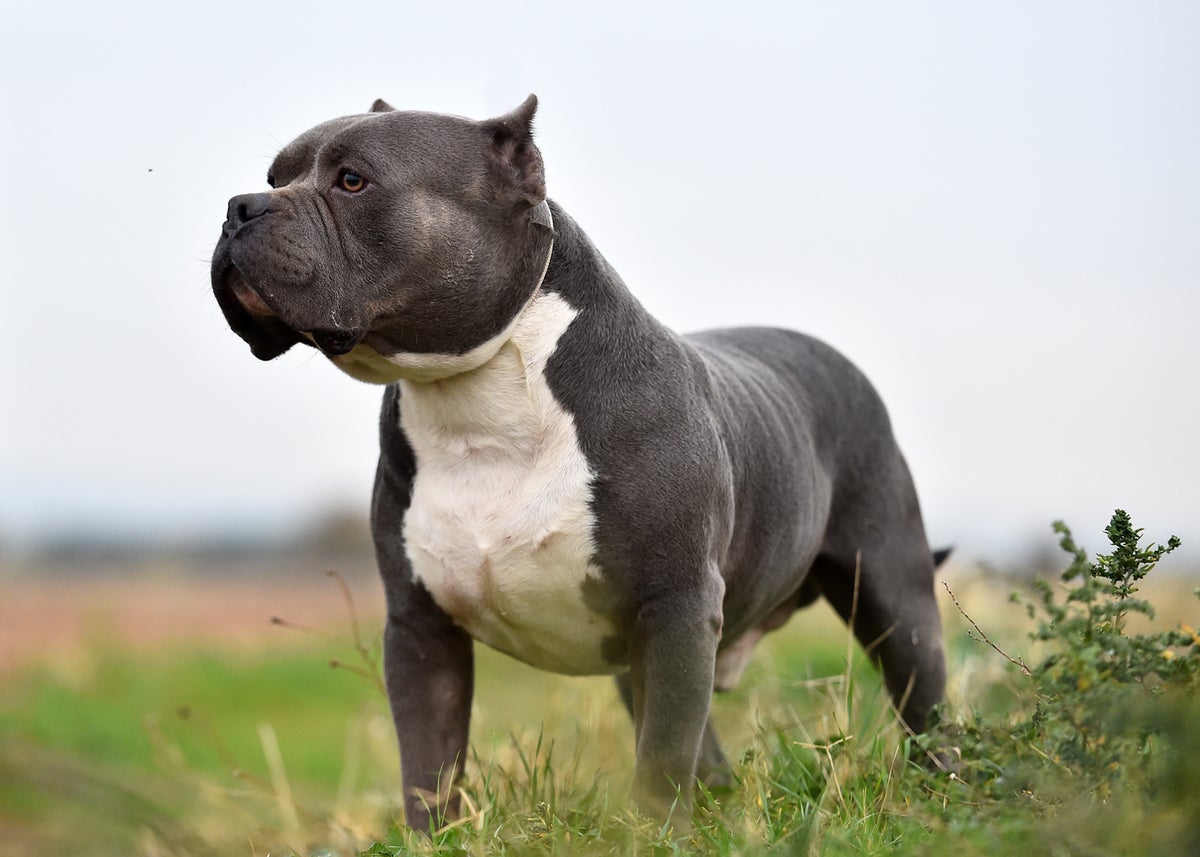
There will be an “amnesty” ahead of a total ban on American XL bullies, the government’s chief veterinary officer has said, confirming there would be no cull of the dogs.
Rishi Sunak announced on Friday that his government would define the XL bully as a breed with the aim of banning them by the end of the year after a father-of-two was mauled to death by two of the dogs while reportedly trying to protect his elderly mother.
It is the latest in a wave of attacks on dogs and humans, which days earlier saw a bully-type dog attack an 11-year-old girl and two men in Birmingham.
While many have joined the growing chorus of calls for a ban, owners of bully-type dogs have reacted with panic that their pets could be seized and killed.
Seeking to assuage these fears, chief veterinary officer Professor Christine Middlemiss said the dogs would not be culled.
“There will be an amnesty,” Prof Middlemiss told BBC Radio 4’s Today programme. “So people that already have these dogs – and some of them will be well socialised, well managed, well trained – you will need to register and take certain actions.
“Your dog will need to be neutered. It will need to be muzzled when out in public and on a lead and insured.
“But if you comply with these actions, and that means we’ll know where these dogs are, which will be a massive benefit, then yes, absolutely you will be able to keep your dog.”
A dog was captured on CCTV attacking members of the public in Birmingham, including an 11-year-old girl— (SWNS)
Her comments came as a 30-year-old man arrested in connection with the death of Ian Price – who died in hospital in Staffordshire after being mauled by two dogs – was released on conditional bail. Police said their investigation “continues at pace”.
While groups including the RSPCA, Kennel Club and British Veterinary Association have argued against a breed-specific ban, Labour’s shadow policing minister Alex Norris said on Saturday that he disagreed with the coalition of animal charities that a ban would not stop attacks.
“The data is there, we know the most recent fatalities, the majority of them have been due to this breed,” he told Times Radio. “So you know the evidence is there and is growing.
“I understand why they take the position that they take, they want to see good policymaking. We of course share that there is just a public-safety issue here that cannot be ignored.”
The dogs have so far been linked to 43 per cent of 815 attacks logged by campaign group Bully Watch, founded in July, which has traced the heritage of around half of all breeding XL bullies in the UK to one dog known as “Killer Kimbo”.
Killer Kimbo, the dog from which reportedly half of UK XL bullies descend— ( Empyrean Bullies/YouTube)
“The American bully is founded on American pit bull terrier, it was essentially started in the late 80s and early 90s by breeding fighting American pit bull terriers,” Dr Lawrence Newport, a legal academic behind Bully Watch told Times Radio.
“These are dogs that have one-on-one fights to the deaths with other dogs and they were then bred together. The claim was that they were then mixed with other kinds of large dog breeds like mastiffs, etc.
“What research from Bully Watch has shown is that actually if you trace their pedigrees, these dogs are just highly inbred fighting pit bulls.
“Indeed, a recent investigative work with Bully Watch and the Telegraph showed that 50 per cent of all American bullies in the country or breeding American bullies in the country, are linked to one single dog known as Killer Kimbo, who is linked to multiple deaths, certainly his offspring are linked to multiple deaths, and Killer Kimbo is so inbred he has the same great-grandfather four times over.”
The “uniquely dangerous breed” has been responsible for nearly 50 per cent of all attacks on both humans and dogs, and 70 per cent of all deaths to dogs since 2021, Dr Newport claimed.
‘The rise of the American bully is a natural experiment in what happens if you relax a ban,’ said Dr Newport— (Getty Images)
He added: “We actually know that bans work because we’ve had one in place on pit bulls since 1991. That ban has been very successful. And we know that because, for example, in the UK we have half the per capita deaths to dogs that the US does, and that difference is entirely explained by pit bulls.
“Pit bulls in the US are behind around about 60 per cent of all deaths to dogs. We don’t have that here, in large part because of the ban. And indeed, the recent rise of the American bully is a natural experiment in what happens if you relax a ban.
“They are, after all, a pit bull type and in around about 2015 they were allowed through a couple of court cases, they were seen as a quote-unquote different breed and were then allowed into the country and of course by 2018, many are imported and now we have found to our great cost, what that means – deaths and attacks skyrocket. Bans work.”







